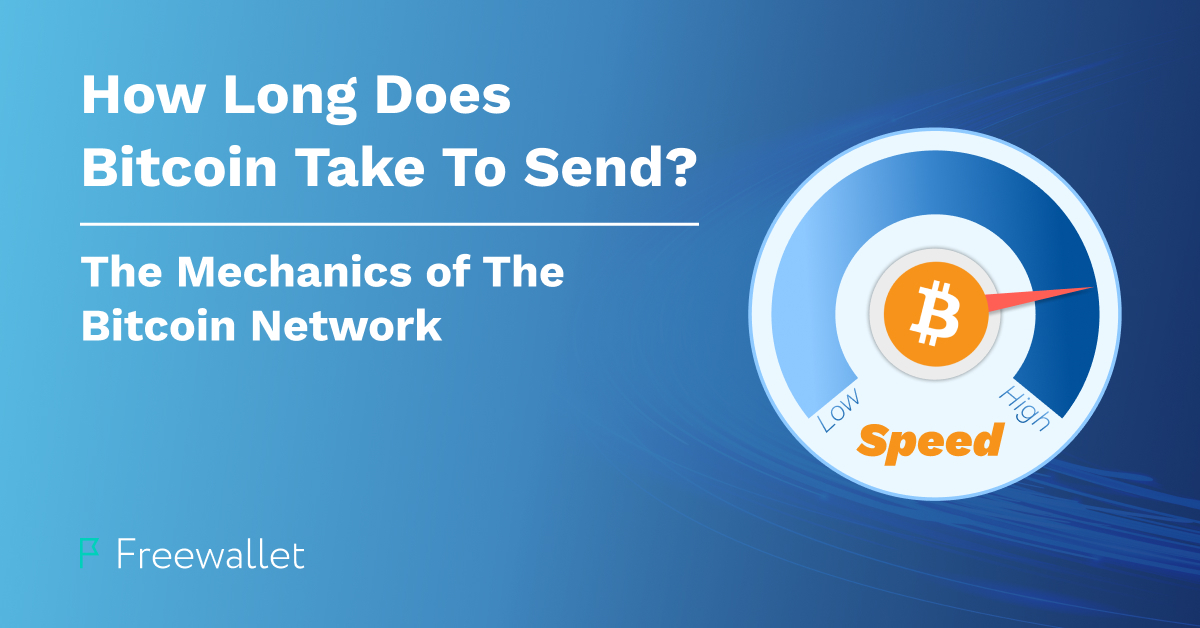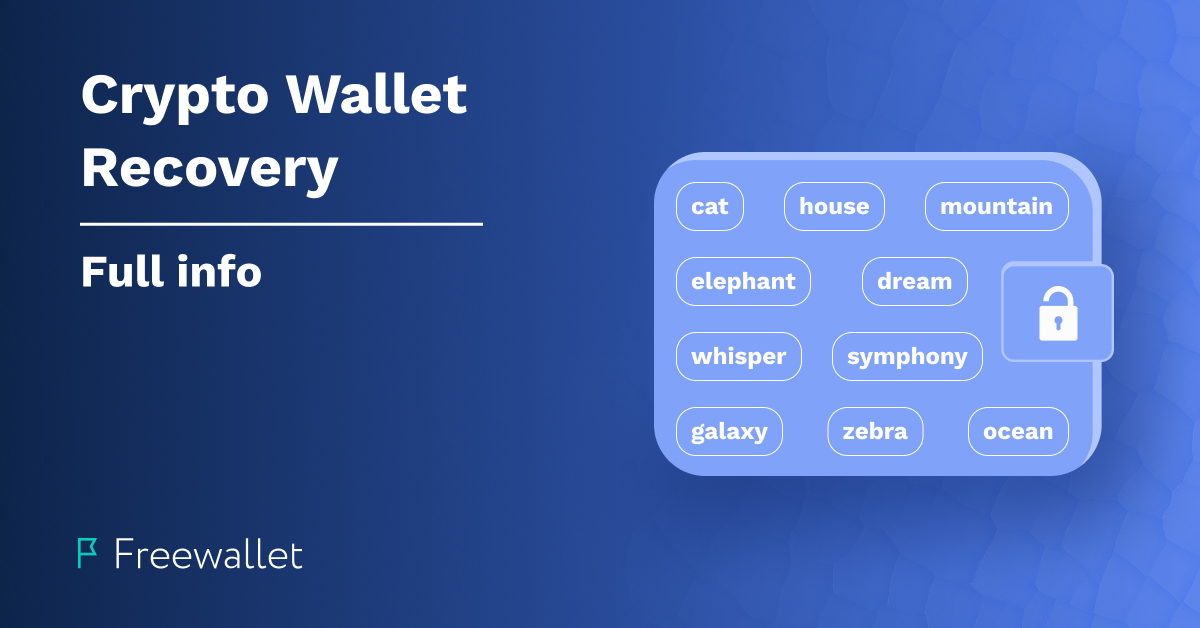
Transaction speed is one of the most discussed topics when it comes to mass adoption of cryptocurrencies. The fact is that such traditional payment operator systems as Visa or Mastercard are capable of performing dozens of thousands transactions per second satisfying the high pool of people using these cards. Cryptocurrencies, despite all their advantages over the traditional banks, have always been far less fast if compared to Visa or other fiat money operators.
As the very first cryptocurrency, Bitcoin is especially slow as transaction speed became a hot topic and was partly solved by newer cryptocurrency projects. There are certain reasons behind the Bitcoin transaction speed and several proposed solutions to this hurdle. This article explains how long it takes to send Bitcoin, how this operation works, how to send and receive BTC safely, and other important things.
How Long Does It Take to Send Bitcoin?
Bitcoin is the first cryptocurrency and the most used cryptocurrency with the highest market capitalization as of May 2024. Unlike traditional means of payment, Bitcoin is not controlled by any institution or state. No one can freeze or block your BTC. Using Bitcoin, you can send money abroad as easily as sending it to a person sitting next to you.
However, when it comes to a number of transactions per second, the Bitcon network drags behind traditional payment operators. Bitcoin does around 7 transactions per second which is desperately few for a network of the most popular cryptocurrency.
Image source: HowMuch.net
This low network capacity makes the transaction time pretty long. The BTC transaction time may vary depending on the network congestion and the transaction fee paid. Normally, Bitcoin transaction time varies from around 10 minutes to several hours or even one day. Most of the BTC transactions are completed in the time span between 30 minutes and 2 hours. One hour span is named as an average Bitcoin transaction time.
As you can see, the BTC transaction takes much more than a nearly-instant Visa transaction, however, when it comes to sending money abroad or spending large amounts, BTC can be a preferred currency as banks tend to block transactions of high amounts or spending money abroad. With Bitcoin, you can transfer funds without these problems.
The Mechanics of The Bitcoin Network
Now let’s see how the transactions on the Bitcoin network take place. The consensus mechanism that protects the network from attacks and guarantees the impossibility of double spending used in the Bitcoin network is proof-of-work (PoW). Transactions are validated through “mining” in which people sacrifice some computational power to validate transactions through solving math puzzles. For years, the amount of hashing power needed to find the correct solution became so significant that the annual energy consumption for mining Bitcoin reached the scale of energy consumption of entire countries.
As mining is so costly, miners get incentives. First off, successful miners receive block rewards (in BTC). On top of this, miners get a portion of the transaction fee. Miners give priority to transactions with a higher transaction fee. This creates an opportunity for senders to speed up a transaction.
Image source: CNBC
As a single entity cannot validate the transaction, it needs 6 confirmations in order to get a completed status. The block is mined once every 10 minutes while average transaction time is roughly 60 minutes. Some operators complete transactions faster after just 2 confirmations.
How to Send and Receive Bitcoin?
Sending/receiving Bitcoin requires creating the BTC wallet. The wallet address functions as a kind of a bank account for your cryptocurrency. There are many types of wallets. Nowadays, there are many intuitive multifunctional wallet apps that can be used for sending and receiving the BTC coins. To choose the wallet that meets your demands the best, you should do your own research. We’ll highlight the benefits of using a Freewallet non-custody web3 wallet app in the next chapter.
If you are going to send Bitcoin, you should top up your wallet with BTC. To do so you should buy Bitcoin on a crypto exchange or a marketplace using fiat money, or receive BTC from another crypto wallet. To receive BTC you don’t have to do anything but provide a public address of your wallet to a person eager to send you BTC. To buy BTC by card, follow the instructions of the platform. Choosing the best platform requires conducting research so that you can find a trustworthy platform with optimal conditions.
If you use a wallet with GUI, you should request the public address of the receiving party. Paste this address or scan it with your wallet app if it has a form of a QR code, specify the amount, and release your coins. It’s crucial not to share your private key with others and don’t send it accidentally instead of a public address. To avoid sending coins to a wrong address, double-check the address and avoid tapping it manually. Use copy-paste commands instead or scan a QR-code.
Freewallet Secure Web3 Wallet
In 2024, we released a self-custody web3 Freewallet app. This app is a multifunctional and multicurrency crypto wallet. It allows storing, sending, receiving, and exchanging over 1,000 cryptocurrencies based on 15 blockchains. To expand this number furtherfarther users can add custom blockchains and test new opportunities.
The wallet has integrated centralized and decentralized exchanges and an instant swap service. It allows users to exchange crypto effortlessly. On top of that, Freewallet offers crypto on-ramps so that you can buy crypto by card using your local payment operator.
Ease of use, versatility, and top-notch security are our main priorities. The app doesn’t collect your data and doesn’t have access to your private keys. Creating a wallet is a straightforward process that doesn’t require any special knowledge. Using Freewallet you can join DeFi platforms using the WalletConnect feature.
Conclusion
Although Bitcoin offers many advantages over the traditional banking system, it has serious problems with transaction speed. On average it takes from one to two hours to send Bitcoin which is much more than the plain seconds needed to perform a transaction through Visa or other huge payment operator.
The problem is well-known and many crypto developers try to solve it, creating new speed-focused cryptocurrencies or creating proposals for Bitcoin, aiming to improve the performance of the most popular cryptocurrency.
FAQs
Now, let’s answer the most asked questions about the BTC transaction speed.
What Is a Bitcoin Mempool?
Mempool is kind of a waiting room for the BTC transactions that are yet to be confirmed.
How Many Confirmations Is Needed for Bitcoin Transaction?
Bitcoin transactions need six confirmations, however, some operators complete transactions after two confirmations so that the transaction speed is higher.
How to Check Bitcoin Transaction Time?
You can’t do that before the transaction is completed as the transaction time depends on multiple factors such as the network congestion, etc.
How to Check if Bitcoin Transaction Is Verified?
You can always check the info recorded on the blockchain. For this, you should visit any Bitcoin block explorer website and see the status of your transaction. To single out your transaction, you should identify it by the hash.
How to Speed Up Bitcoin Transaction?
To transfer Bitcoin faster, you can use one of the following methods:
First, you can increase the network fee. The more you pay as a fee, the higher your transaction’s priority is. If you want to save on fees, you may pay less but you risk increasing the transaction time significantly.
The second method is choosing the proper time for performing a transaction. For instance, you can postpone your transaction to the weekend as on weekends the network is less loaded.
Related
Stay tuned
Subscribe for weekly updates from our blog. Promise you will not get emails any more often.
Most Popular
New Posts
Stay tuned
Subscribe for weekly updates from our blog. Promise you will not get emails any more often.





